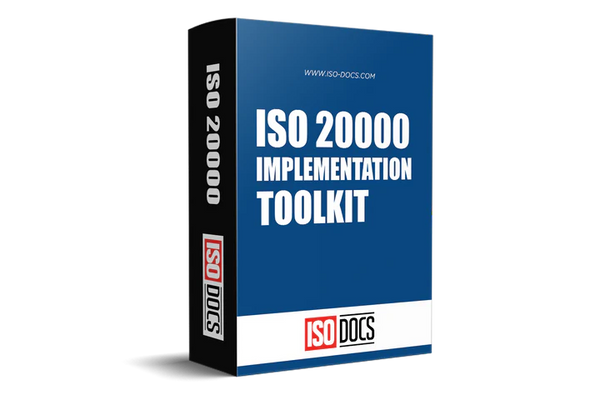ISO 20000 Continual Service Improvement (CSI) register Template
What is the Continual Service Improvement (CSI) register?
A Continual Service Improvement (CSI) register is a document that captures the continual improvement process. It outlines all the processes and procedures that must be followed for service delivery. A CSI register should contain information about what is done before, during, and after an incident to be handled as efficiently as possible.

It should also contain information about what is done with the gathered data. A CSI register can help employees and managers understand their roles in service improvement procedures and how they fit into them.
What Is in the Continual Service Improvement (CSI) Register?
The purpose of the CSI register is to show how an organisation can improve its service delivery by setting targets, assessing progress, and adjusting accordingly. It Includes:
Register No: The risk register number identifies a particular entry in the CSI register. The purpose of this identification is to keep track of which risks have been assessed.
Date: The date shows when your company has completed its most recent service improvement activity, and it will be updated with every new one you complete.
It can be changed manually to show an earlier or later time.
Description: Provides detailed information about an organization's response to continuous service improvement. This includes areas of focus, progress made, and what needs to be done.
Service: This registry will allow users to search for available service providers, organizations, or individuals that offer specific services. This registry aims to make it easier for consumers of service products and services to identify suppliers who can meet their needs while supporting sustainability efforts by reducing duplication.
Action Owner: Dedicated individual who will be responsible for implementing changes that are identified during CSI. The Action Owner must have sufficient authority to implement these actions and ensure they are completed within an agreed period.
Current Status: Overview of existing and proposed activities for service improvement.
Size (Small, Medium, Large): This is measured by how many employees they have. It can be as simple as counting the number of employees or calculating the volume of data each employee generates monthly.
Priority refers to the order in which the improvement may be undertaken, with higher priorities undertaken before lower ones.
Timescale (Short, Medium, Large): The time scale in the continual service improvement (CSI) register measures how much time has passed. It is essential to include this information to help you understand what phase your company is currently in and where it should be beheaded.
KPI Metric: key performance indicator (KPI) metric that captures the quality-of-service delivery.
Criticality: This provides an overview of the criticality of service improvements.
Implementation Risk: The register of implementation risk (RI) can be used to assess the potential risks that could occur during the implementation of CSI.
The scope of the Seven-Step Improvement technique
The scope of the Seven-Step Improvement method is to enhance quality and potency by removing waste, wishing on facts, and raising processes. Key steps embrace understanding current performance levels, distinguishing root causes of issues holding back improvement, developing an idea for fixing those issues to succeed in desired goals, and implementing enhancements with attention to continuous feedback loops.
The Seven-Step Process:

1. Outline the matter or project: The value could also be within the style of an occurrence, a condition, or something else that must be addressed. To with success complete this task, you wish for three things:
- Understanding what the shopper wants
- a transparent understanding of why it's happened
- Knowing some way to prevent it from happening yet again
2. Collect information and verify trends associated with the matter or project: This information will assist you in understanding where a haul could also occur and what steps to take.
3. make sure what caused the matter project by examining patterns in collected data: Involves continuous observation, activity, analysis, interpretation, and analysis of shopper desires, services, and expectations to spice up the quality of service. This continual technique will assist you in verifying what caused the matter or project by examining patterns in collected information so that you will regulate as necessary.
4. Action preparation for resolution of the Problem: The first step is to identify the causes of that disadvantage. The second step is to determine what actions are taken to mitigate these causes and stop them from happening again. Once this has been determined, it's vital for you as an employee of your company to come back duplicate with action and prepare for how you are about to perform these steps.
5. Right presentation and utilization info of data: An honest presentation of information will facilitate those that are the CSI prepared to understand, but they're going to build enhancements.
6. Implement changes that facilitate solving the matter or attaining your goal: It may be wont to each solve issues and determine opportunities for improvement. CSI starts with the idea that includes:
- what you'd wish to vary
- why are you making the modification
- United Nations agency is liable for overseeing the project whereas it's happening
- what amount of time will it want to complete?
- resources required
- outside sources needed
- what got to happen if one factor goes wrong?
7. Measure performance before and once implementing the changes: It is a technique that allows organizations to repeatedly improve their performance by measuring before and once modifications to create a circuit. CSI's goal is to raise the service and ensure it's sustained over time.



